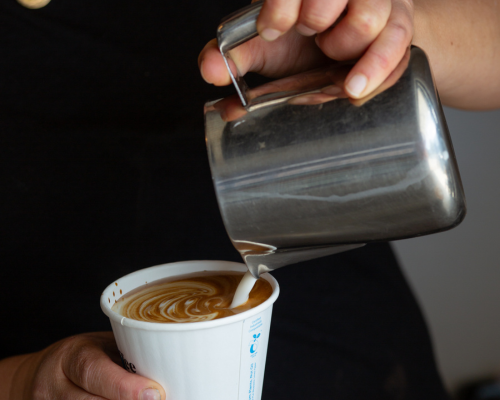The future of your cup!
There is much talk about the impact of climate change on all walks of life. One area not discussed much in the general population affects something many of us take for granted as part of our daily routine— coffee!Of course, coffee is an agricultural product that depends significantly on the correct climatic conditions for its growth. As the climate changes, this naturally affects the areas where our daily cup is grown.
Coffee is traditionally grown in a relatively small band known as the 'Coffee Belt', which lies 25 degrees north and 30 degrees south of the equator, within the tropics of Cancer and Capricorn. The optimum growing conditions for coffee exist at altitude within this belt, and as our climate changes, so do the climates within the belt.
There have been predictions that by 2050, the demand for coffee will increase by 50% of 2020 levels, the availability of land currently growing coffee will shrink by 50%
Some examples of this are:
In Mexico/Central America, where 8.5 million people rely on coffee for their livelihood, the temperature has increased by 1 degree, and rainfall has decreased by 15% since 1960. Additionally, a coffee leaf rust outbreak in 2013/14 reduced the crop by 2.7 million bags ($500m) and affected 350,000+ jobs.In Colombia, wetter, warmer weather is causing coffee leaf rust to climb higher in the landscape, and a predicted 2.5-degree warming by 2050 will damage 60% of available agricultural land.
Source: www.climateinstitute.org.au/coffee.html Similar stories exist in Ethiopia, Tanzania, Vietnam (now the world's second-biggest coffee producer), and Brazil.
So, producers must cultivate coffee in an increasingly hostile climate, with more intense and frequent weather extremes, such as droughts, strong winds, heavy rains, and higher temperatures. These climate hazards directly impact the crop (e.g., coffee yield and quality loss, damage to trees, reduced flowering, etc.) and indirectly affect the growing environs, such as increased pests and disease, soil erosion, and fungus prevalence.
What can be done?
There are three main resilience pathways for coffee: -- The relocation of coffee farming to areas with suitable climates, especially higher elevations.
- Adapting farming practices such as irrigation, improved shade and mulching.
- The development of adaptive crop cultivars (via plant breeding) or the use of new coffee crop species.
What is being done?
In 2015, World Coffee Research (WCR) launched its International Multi-Location Variet Trail (IMLVT). Upon the program's initiation, WCR gathered 31 top-performing coffee varieties from 11 suppliers internationally. The varieties—most of which have never been tested on such a broad basis—have since been distributed to 18 coffee-growing countries for long-term evaluation at 29 research sites.The locations of the IMLVT program's sites cover a significant range of climate variability. The global nature of the trial allows WCR to see how different varieties perform in hotter, drier, wetter, or cooler areas than their counterparts and can help predict how varieties will react to future conditions.
Each site follows a six-year timeline that includes activities spanning installation, the measurement of plant growth, pest/disease susceptibility, yield, and cup quality evaluation. Sites established in 2015 reached full maturity in 2022, while sites established in later years are still in process and under continuous evaluation.
(Source: https://worldcoffeeresearch.org/news/2022/imlvt-global-results)
New Species
There are currently 3 species of coffee that are commercially grown.Coffea Arabica, Coffea Canephora (Robusta) & Coffea Liberica (<5% global production). Given that there are another 125 species of Coffea, there is current research into some of these being suitable for commercial production due to their ability to be grown at lower altitudes and be more resistant to various pests and diseases.
Some examples:
Coffea Racemosa
Racemosa grows at sea level, is highly drought resistant, and could help breed future coffees. In addition, It could help breed the future of coffee(e.g., by improving traits in Arabica coffee).Coffea Stenophylla
Stenophylla is tolerant to high temperatures and low rainfall, can be grown at low altitudes and has a flavour profile similar to Arabica.(Sources: Davis et al. 2020 and Davis et al. 2021)
















